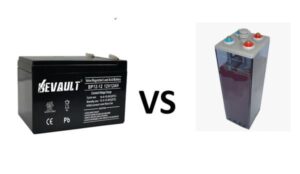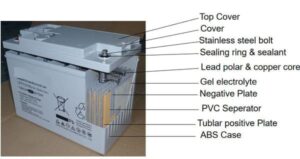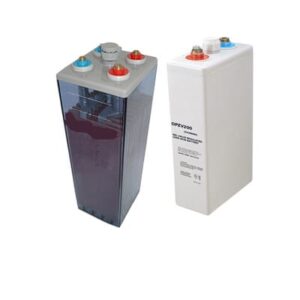What's the Main Difference in AGM and OPzV Batteries?
When choosing a battery for backup power systems, the decision between AGM and OPzV batteries can be confusing. I've seen many clients struggle with this choice, unsure which technology best suits their needs.
The main differences between AGM and OPzV batteries lie in their construction, electrolyte type, and lifespan. AGM batteries use absorbed glass mat technology with liquid electrolyte, while OPzV batteries use tubular plates with gel electrolyte, offering longer life but at a higher cost.

Let's dive deeper into each battery type to understand their unique characteristics and help you make an informed decision for your specific application.
What is an OPzV Battery?
Many people are unfamiliar with OPzV technology, despite its significant advantages in certain applications. This knowledge gap often leads to missed opportunities for optimal system design.
An OPzV battery is a valve-regulated lead-acid battery that uses tubular positive plates and gel electrolyte. The 'O' stands for Ortsfest (stationary), 'Pz' for PanZerplatte (tubular plate), and 'V' for verschlossen (sealed).

Having worked extensively with OPzV batteries, I can outline their key characteristics:
OPzV Battery Features
| Feature | Description | Benefit |
|---|---|---|
| Tubular Plates | Positive active material enclosed in tubes | Enhanced cycle life |
| Gel Electrolyte | Silica-based gelled electrolyte | Better deep discharge recovery |
| Design Life | 15-20 years | Long-term reliability |
| Maintenance | Sealed design | No water addition needed |
The tubular plate design1 provides several advantages:
- Increased surface area for better performance
- Protected active material for longer life
- Improved deep discharge capability2
- Better high-temperature resistance
What is the Main Disadvantage of an AGM Battery?
While AGM batteries are popular in many applications, they come with certain limitations that users should understand before making a purchase decision.
The main disadvantage of AGM batteries is their shorter lifespan compared to OPzV batteries, typically lasting 5-10 years. They also have lower deep discharge capabilities and are more sensitive to high temperatures.

Based on my experience with various installations, here are the key limitations:
AGM Battery Challenges
-
Cycle Life Limitations
- Shorter overall lifespan
- Reduced performance in high-temperature environments
- Limited deep discharge cycles
- Faster capacity degradation
-
Operating Constraints
- Sensitive to overcharging
- Temperature-dependent performance
- Limited energy density
- Higher self-discharge rate
What is the Difference Between an AGM Battery and a Regular Battery?
Many customers ask about the advantages of AGM over traditional flooded batteries, especially given the price premium of AGM technology.
AGM batteries differ from regular flooded batteries by using absorbed glass mat separators that hold the electrolyte, making them spill-proof and maintenance-free. They also offer better vibration resistance and can be mounted in any orientation.

From my installation experience, here are the key differences:
AGM vs Regular Battery Comparison
| Feature | AGM Battery | Regular Battery |
|---|---|---|
| Maintenance | Maintenance-free | Regular water addition |
| Installation | Any position | Upright only |
| Safety | Spill-proof | Can leak |
| Initial Cost | Higher | Lower |
| Charging | Faster charging | Standard charging |
What is the Difference Between OPzS and OPzV Batteries?
The choice between OPzS and OPzV batteries often confuses buyers, as both use tubular plate technology but have distinct characteristics.
OPzS batteries are flooded lead-acid batteries requiring maintenance, while OPzV batteries are sealed and maintenance-free with gel electrolyte. OPzV batteries can be installed in any position and don't require ventilation, unlike OPzS batteries.

Drawing from my technical expertise, here are the main differences:
OPzS vs OPzV Comparison
-
Design Characteristics
- OPzS uses liquid electrolyte requiring regular maintenance
- OPzV uses gel electrolyte requiring no maintenance
- OPzS needs dedicated ventilated rooms
- OPzV can be installed in regular environments
-
Application Considerations
- OPzS typically has lower initial cost
- OPzV offers more installation flexibility
- OPzS may have slightly longer lifespan with proper maintenance
- OPzV provides better safety and convenience
Conclusion
While AGM batteries offer maintenance-free operation and versatile mounting options, OPzV batteries provide superior lifespan and deep cycle capabilities. Your choice should depend on specific requirements like budget, maintenance capability, and expected service life.